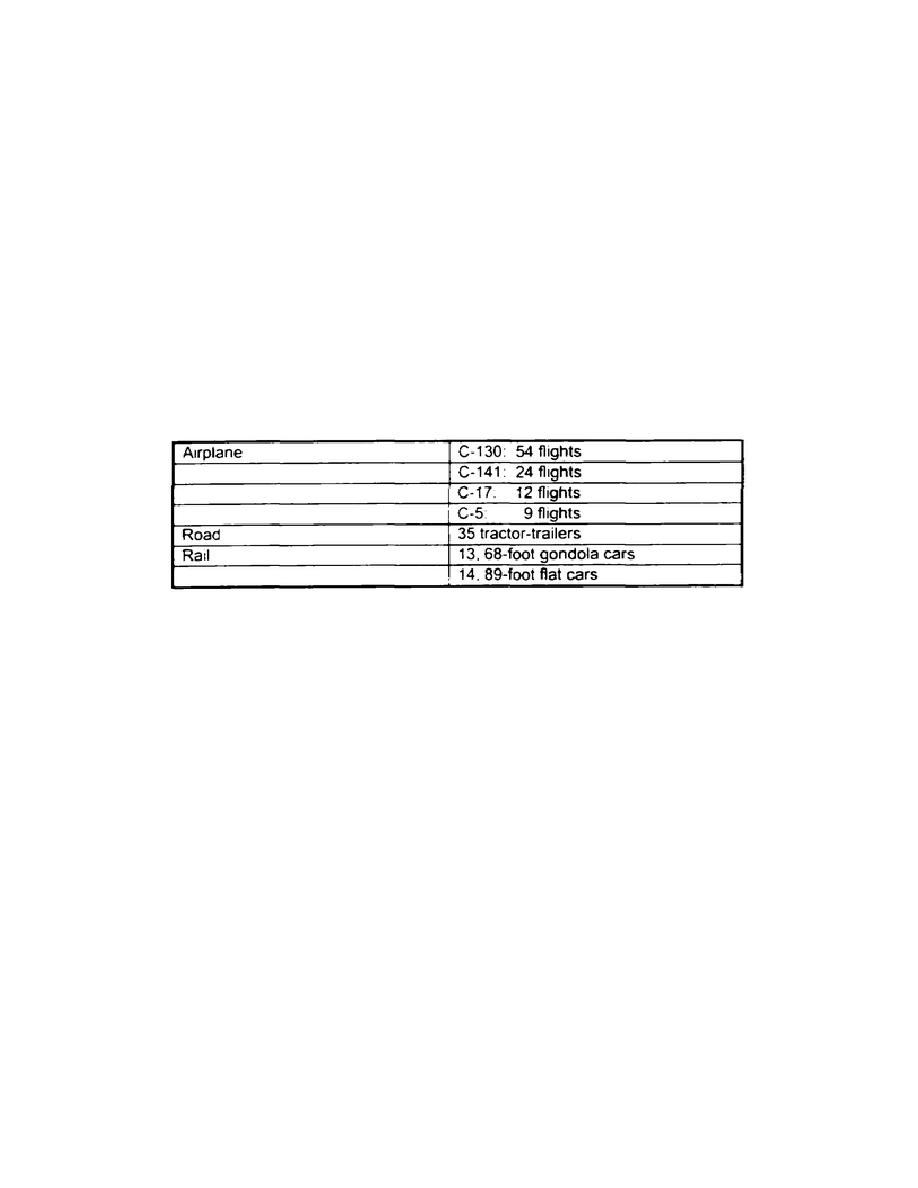
(4) Cost. The cost of the FP module employed with Active and/or Reserve Components is
about .50 per soldier/per day. This includes food, billeting, field services, supplies, and maintenance
for module components. If used with the cold weather kit, the figure increases to about .72 per
soldier/per day. Refurbishment costs for a module are about .2 million, dependent on the length of
deployment and environmental conditions of the site.
c. Dependencies. The FP module is dependent upon other assets for deployment, setup,
redeployment, and operations.
(1) Transportation. The FP module is heavily dependent upon transportation assets for
movement from the prepositioned locations to the FP area of operations. Table 1-1 shows the
transportation assets. The QM Company does not own the module, nor does it have the organic
equipment needed to transport it. However, once on site, most of the module's equipment and containers
can be offloaded with QM FP Company organic MHE.
Table 1-1. Transportation Assets Needed
(2) Real Estate Acquisition. In some cases, real estate acquisition may determine the site
selection. Each module requires 8 to 10 acres for setup. This does not include areas for parking, remote
fuel sites, and additional MWR open spaces. In a good location, it takes about 48 hours to prepare the
site. Allow about 72 hours for a fair location (uneven terrain, lots of brush/trees, partially stable soil,
and poor drainage). A poor location (rough/hilly terrain, dense vegetation, unstable soil and poor
drainage) will take about 96 hours to prepare.
(3) Engineering Assets. Appropriate engineering assets will be required for survey, layout,
and site preparation. This will normally be a Heavy Engineer Combat Battalion. Once FP is set up,
engineering support will be required for RPMA, which may include prime power, utilities maintenance,
fire fighting, and dust abatement. Disposal of solid waste, including medical and food waste, must be
arranged. This can be through incineration or haul-away by military or contracted. A FP module can
generate 20,000 gallons of graywater and 3,000 gallons of blackwater per day.
1-5
QM0424



 Previous Page
Previous Page
